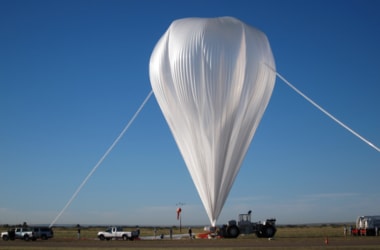
NASA is planning to launch a balloon-based observatory to measure emissions from the interstellar medium or the cosmic medium found between stars.
This is known as Galactic/Extragalactic ULDB Spectroscopic Terahertz Observatory or GUSTO.
Data from this mission will help them to assess the life cycle of interstellar gas in the Milky Way galaxy.
The formation and destruction of star forming clouds needs to be analysed and the dynamics and gas flow in the vicinity of the galaxy's centre need to be understood.
Data will help scientists assess the same using an Ultralong-Duration Balloon (ULDB) carrying a telescope with carbon, oxygen and nitrogen emission line detectors.
The unique combination of data will provide the spectral and spatial resolution information required for researchers to focus on complexities of the interstellar medium and map large sections of plane of the Milky Way galaxy and the nearby Large Magellanic Cloud.
GUSTO will provide the first complete study of all phases of the stellar life cycle, from the formation of molecular clouds, through star birth and evolution, to the formation of gas clouds and the re-initiation of the cycle.
The mission is targeted for launch in 2021 from McMurdo, Antarctica, and is expected to stay in the air between 100 to 170 days, depending on weather conditions.
It will cost about USD 40 million, including the balloon launch funding and the cost of post-launch operations and data analysis